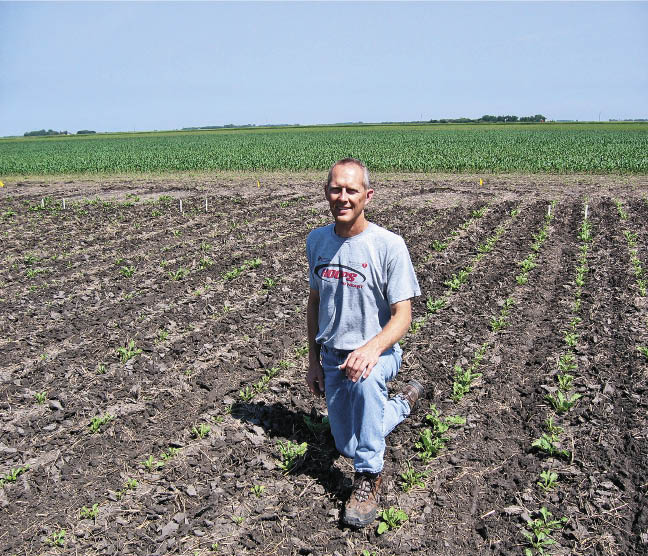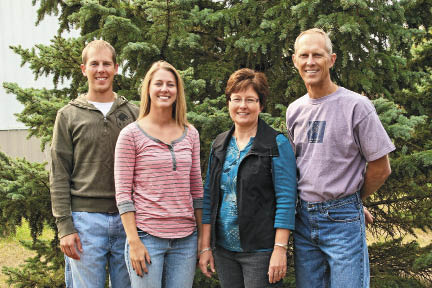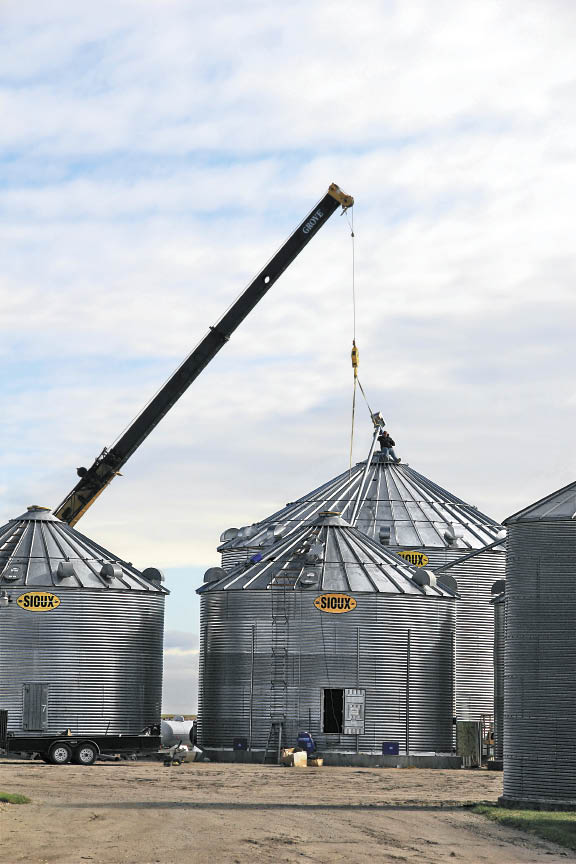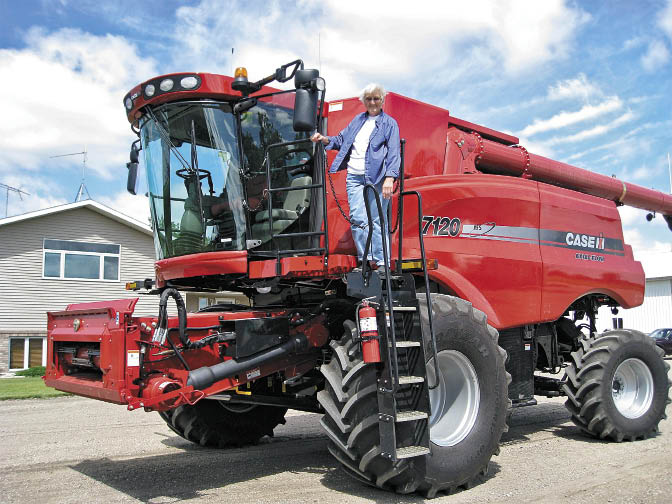
Growing season is under way again on the Freese Farm about eight miles north of Breckenridge, Minn.
Pat and his wife, Diana, took over the operation from his parents in 1985 and first raised sugarbeets in 1991.
"At the time I was teaching in the architectural drafting department at North Dakota State College of Science," Pat said. "Beets were profitable, and I was looking to expand the operation. I'm glad I made the decision to grow beets. It was more profitable than raising livestock or teaching. I knew little about livestock, and it was difficult to both teach and farm full time."
Pat borrowed a neighbor's planter and partnered with another grower using his equipment for harvest the first season he raised beets. He purchased his own harvester the next year and a planter the following year.
 Since then he has increased his acreage of beets. He also leases a portion of his beet acres to a friend. Pat's operation is a small grains and row crop farm, where he grows beets, spring wheat, soybeans and corn.
Since then he has increased his acreage of beets. He also leases a portion of his beet acres to a friend. Pat's operation is a small grains and row crop farm, where he grows beets, spring wheat, soybeans and corn.
Pat's parents, Francis and LouElla, raised an active family of nine children and successfully grew the family farm. They turned over the farm to Pat and Diana as they transitioned into semiretirement.
"We decided it was a good opportunity to farm and raise kids on the farm," Pat, 54, said of taking the reins.
Their son, Brent, is a University of North Dakota graduate who works at Ellingson Drainage in Harwood, N.D. He's also a Blackhawk pilot for the North Dakota Army National Guard. Their daughter, Nicole, is a graduate of University of Minnesota-Twin Cities. She works for the College of Continuing Education at the University of Minnesota in St. Paul.

Francis passed away in 2004, and LouElla lives in Breckenridge. Yet the annual cycle on the Freese Farm remains the same.
Wheat is typically planted in the second week of April. Beets and corn follow near the end of April or beginning of May. Soybeans are planted in the middle of May.
Harvest arrives in August for wheat and September through October for beets, corn and soybeans.
Pat said the beet yield averages between 21 to 24 tons per acre. Some years yields have risen to the upper 20s and low 30s. The sugar content is usually within a half point above or below the factory average.
"Sometimes we'll have a higher yield and lower sugar content," he said. "Last year we had lower yield at 24/25 and higher sugar content because of drier conditions. Not as much size or weight but higher sugar content. The trip to the beet pile is 4 miles away as the crow flies and 10 miles by road."
Breckenridge's population stood at 3,386 in the 2010 Census. Breckenridge's twin city is Wahpeton, N.D. The Bois de Sioux River and the Otter Tail River join at Breckenridge and Wahpeton to form the Red River of the North.
The Minn-Dak Farmers Cooperative located in Wahpeton serves beet growers in the Red River Valley of Minnesota, North Dakota and South Dakota. The co-op processes the beets into sugar and products such as molasses and beet pulp pellets (used in animal feed); the products are then marketed through agents worldwide. The co-op's Minn-Dak Yeast segment produces fresh bakers' yeast. Minn-Dak is owned by its farmer/members, a group of some 480 beet growers. Founded in 1972, its customers include industrial users such as confectioners, breakfast-cereal manufacturers and bakeries.
Every grower faces challenges like "trying to get everything done on a timely basis," Pat said.
Then there are those issues every grower confronts.
"Environmental aspects," Pat said as he listed them: "EPA requirements. Fuel containment. Regulations on handling of chemicals."
Beet growers must also battle diseases
One of the most problematic root diseases in beet production is Aphanomyces root rot, caused by the soilborne oomycete Aphanomyces cochlioides. Today A. cochlioides is well recognized as a pathogen wherever sugarbeet is grown worldwide.
In the United States, the pathogen occurs infrequently in the far west states but is a growing problem in other regions, particularly southern Minnesota and the Red River Valley. Over the last decade, this pathogen has become an important part of a root disease complex (including Rhizoctonia root rot and rhizomania) and has been demonstrated to be widely distributed throughout western Nebraska and other areas of the Central High Plains.
"That disease just about put me out of growing sugarbeets," Pat said.
But the sugarbeet purification process results in a by-product called "spent lime." It provided an effective solution to root rot, as Pat learned by accident several years ago.
Lime (calcium carbonate) precipitates impurities in sugarbeet juice. Purified juice is further processed into crystal sugar, but spent lime (14 percent less acid neutralizing power of fresh lime) contains impurities and becomes a sugarbeet industry by-product. Seven factories in the Red River Valley and southern Minnesota generate 500,000 tons (dry weight) of spent lime annually and some has been stockpiled for 20 years.
"Due to a previous issue, lime had been applied to a small portion of a field," Pat explained. "Several years later, sugarbeets were planted in that field. Root rot disease hit the field and wiped out the crop, except for the area where the lime was applied. That's how we found out about this new use of spent lime."
Researchers at North Dakota State University and the University of Minnesota are in their ninth year of studying how spent lime combats root rot.
"They know that it works, but they don't know why it works," Pat said.
In Pat's case, he uses between 5 to 10 tons of spent lime per acre.
"That's a lot of spent lime that has to be applied," he said. "As long as it's effective, we'll use it. Seed companies can breed in resistance to help, but the lime is the key factor to avoiding the root rot disease. Breeding in more resistance though, results in lower yields."
Growers pay a loading charge and the cost of trucking and spreading the spent lime.
"My schedule is to harvest the wheat and then apply lime prior to beets the following years. It costs $25-$100 per acre for applying lime, depending on hauling costs."

Pat is serving his fifth year on the board of Minn-Dak Farmers Cooperative. He was elected as treasurer for the first time last December.
"Sugarbeets are quite profitable," Pat said. "It has a tremendous effect on the local economy."
Co-ops help the growers in the long run, he added.
"The more you can do collectively, the better off you are," Pat said.
He's also a proponent of Roundup Ready sugarbeets since it offers better yields than the conventional method.
"Conventional sugarbeets mean many chemical applications to reduce weed pressure," he said. "Weed control is easier now with Roundup Ready."
As for the future of beet production, Pat said that depends what happens on the national level and production worldwide.
Currently the sugar program manages the quantity of sugar to be sold into the U.S. market from U.S. producers and foreign imports. If too much sugar is allowed into the market, prices drop dramatically, he said. Sugar users would like to see the sugar policy eliminated or substantially reduced to order to increase their profits.
"U.S. sugar producers can compete with foreign sugar producers on a level playing field, but when foreign sugar producers are subsidized by their government, that's something we can't compete against," Pat said. "That's a big concern that all sugar growers have.
"Sugar producers have been providing an affordable, reliable and safe sugar supply to our consumers for many years, and we plan to continue into the future."